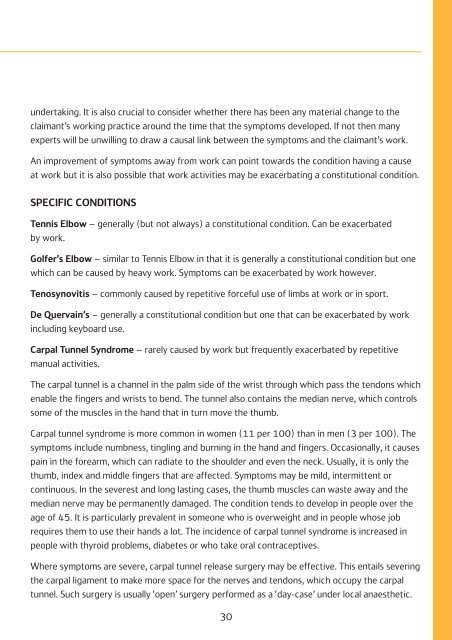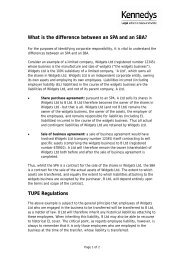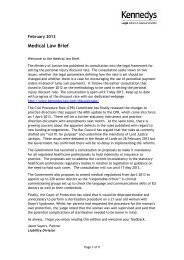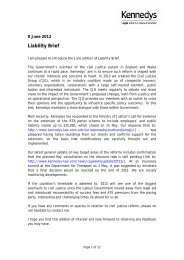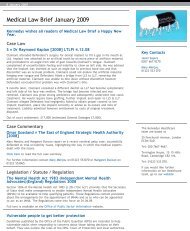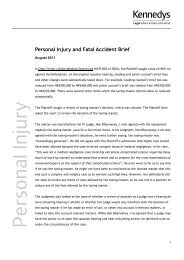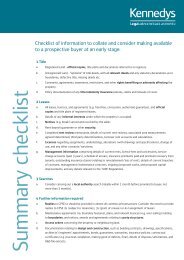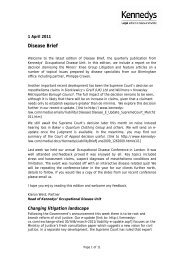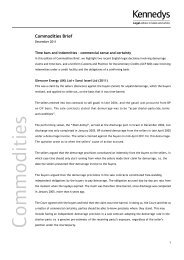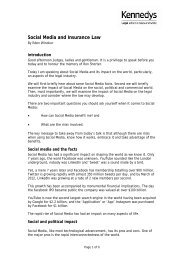Download our Occupational Disease Manual (PDF ... - Kennedys
Download our Occupational Disease Manual (PDF ... - Kennedys
Download our Occupational Disease Manual (PDF ... - Kennedys
You also want an ePaper? Increase the reach of your titles
YUMPU automatically turns print PDFs into web optimized ePapers that Google loves.
undertaking. It is also crucial to consider whether there has been any material change to the<br />
claimant’s working practice around the time that the symptoms developed. If not then many<br />
experts will be unwilling to draw a causal link between the symptoms and the claimant’s work.<br />
An improvement of symptoms away from work can point towards the condition having a cause<br />
at work but it is also possible that work activities may be exacerbating a constitutional condition.<br />
SPECIFIC CONDITIONS<br />
Tennis Elbow – generally (but not always) a constitutional condition. Can be exacerbated<br />
by work.<br />
Golfer’s Elbow – similar to Tennis Elbow in that it is generally a constitutional condition but one<br />
which can be caused by heavy work. Symptoms can be exacerbated by work however.<br />
Tenosynovitis – commonly caused by repetitive forceful use of limbs at work or in sport.<br />
De Quervain’s – generally a constitutional condition but one that can be exacerbated by work<br />
including keyboard use.<br />
Carpal Tunnel Syndrome – rarely caused by work but frequently exacerbated by repetitive<br />
manual activities.<br />
The carpal tunnel is a channel in the palm side of the wrist through which pass the tendons which<br />
enable the fingers and wrists to bend. The tunnel also contains the median nerve, which controls<br />
some of the muscles in the hand that in turn move the thumb.<br />
Carpal tunnel syndrome is more common in women (11 per 100) than in men (3 per 100). The<br />
symptoms include numbness, tingling and burning in the hand and fingers. Occasionally, it causes<br />
pain in the forearm, which can radiate to the shoulder and even the neck. Usually, it is only the<br />
thumb, index and middle fingers that are affected. Symptoms may be mild, intermittent or<br />
continuous. In the severest and long lasting cases, the thumb muscles can waste away and the<br />
median nerve may be permanently damaged. The condition tends to develop in people over the<br />
age of 45. It is particularly prevalent in someone who is overweight and in people whose job<br />
requires them to use their hands a lot. The incidence of carpal tunnel syndrome is increased in<br />
people with thyroid problems, diabetes or who take oral contraceptives.<br />
Where symptoms are severe, carpal tunnel release surgery may be effective. This entails severing<br />
the carpal ligament to make more space for the nerves and tendons, which occupy the carpal<br />
tunnel. Such surgery is usually ‘open’ surgery performed as a ‘day-case’ under local anaesthetic.<br />
30


